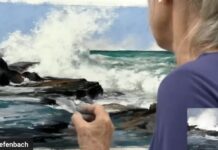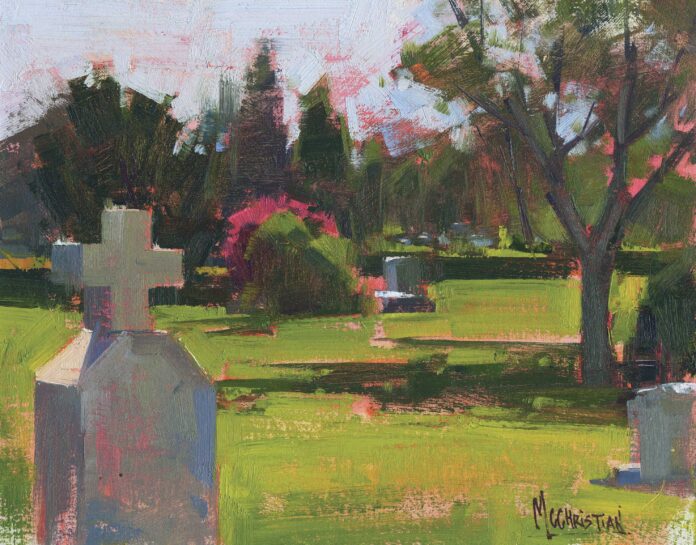
On contemporary landscape painting > The appeal of some paintings is undeniable. But how do we explain the attraction? Let’s examine the work of Jennifer McChristian to help us unravel why such paintings immediately grab our attention and keep us captivated.
The following article features a leading artist who is teaching others how to paint through online workshops at PaintTube.tv. If you’ve ever wanted to paint complex scenes but were intimidated by overwhelming details, then Jennifer’s “Painting With Style” art workshop was made just for you.
What Makes a Painting Work?
1. High Contrast
First, McChristian likes high contrast in her paintings. Take a look at infant toys and you’ll see that from birth, humans are drawn to dramatic differences in light and dark. Our eyes have sensors nicknamed rods that detect value, and cones that see color in better light conditions. Humans have about 20 times more rods than cones, which means values, and the contrast they reveal, are deemed more important by evolution than color.
But McChristian doesn’t just use high contrast to highlight her focal point. The oil painter also contrasts tight drawing with loose, brushy backgrounds. “Having a sound foundation in drawing is important,” says the California artist. “I can’t stress that enough. I always encourage my students to get as much drawing mileage as possible. My husband Ben and I have been hosting weekly figure drawing sessions for 20 years in our studio in Los Feliz, and it has proven invaluable. Drawing is the foundation of painting.”
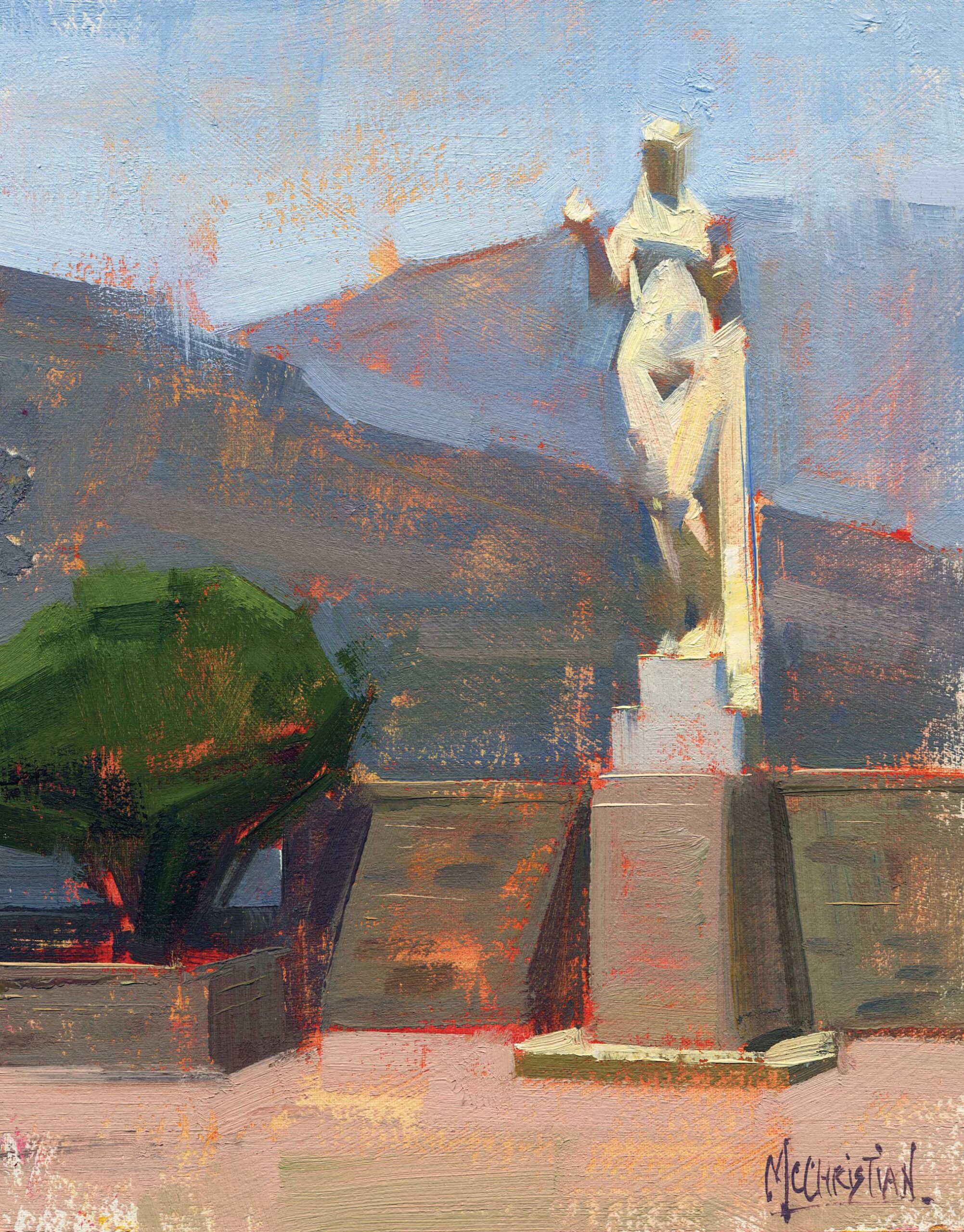
2. Elevation of the Commonplace
Second, McChristian has the artist’s magic ability to lift up the commonplace and make it beautiful. She was inspired in part in this direction by one of her teachers, Robert Blue. He liked to repeatedly go to the same locations to paint, which McChristian appreciated.
“Others wanted to go to spectacular or exotic locations, but he stressed that you have to see the beauty in whatever is in front of you,” says McChristian. “I think that philosophy really resonated with me and stayed central to how I choose my scenes. A lot of the subject matter that I am inspired to paint might not be the first choice for other artists, but the emotional impact of the overlooked places in this world can be powerful…If you can paint the truth of a place and capture the specific nuances and organic rhythms of its nature, texture, or color patterns, you can reach distant places within your soul to hopefully bring back and share with others.
“I feel that this is the fundamental way to bring beauty out of the mundane and create an emotional impact in my work. For this reason I tell my students not to have too many specific expectations when scouting a location and to be open to spontaneous finds. The perfect subject matter might be right in their own backyard or it could be a magical view by the side of the road while en route to their preplanned painting site.
“To emphasize certain elements and engage the viewer more fully, I tend to alter and reinterpret the scene; my aim is to make them feel that they are a participant in the narrative of my painting,” McChristian continues. “A pure and natural landscape without any signs of civilization has a sense of isolation and desertion to it. I like to emphasize elements in an urban scene such as telephone poles, stop signs, and construction cones — things that say there are humans here; we are in harmony with all of this and not separate from it. It gives more character and personality to a painting.”
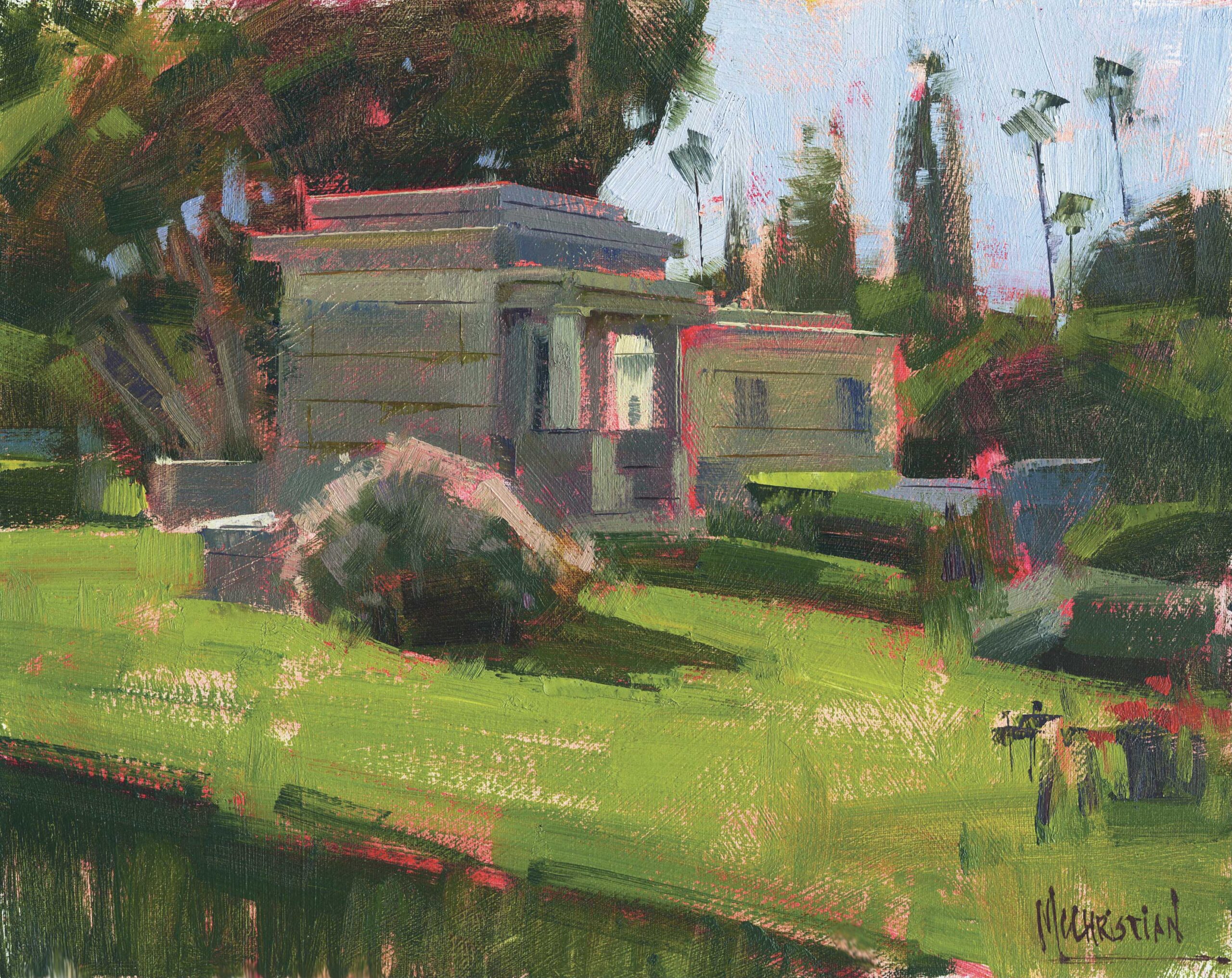
3. Vibrant Color
Third, in terms of immediately attracting the viewer’s eye, McChristian employs what she calls “very vibrant color.” She says she built her personal color theory on the limited palette described in Kevin Macpherson’s first book, Fill Your Oil Paintings With Light and Color; Lois Griffel’s Painting the Impressionist Landscape); and the extensive exercise on color mixing in Alla Prima: Everything I Know About Painting by Richard Schmid.
“The color exercises greatly heightened my perception and sensitivity to color,” says the artist. “I learned the important role color temperature plays in harmonizing the overall color scheme of a painting, and that comparing adjacent colors is the best way to identify the temperature of the hue. I also discovered the rewards of juxtaposing complementary colors in my paintings.”
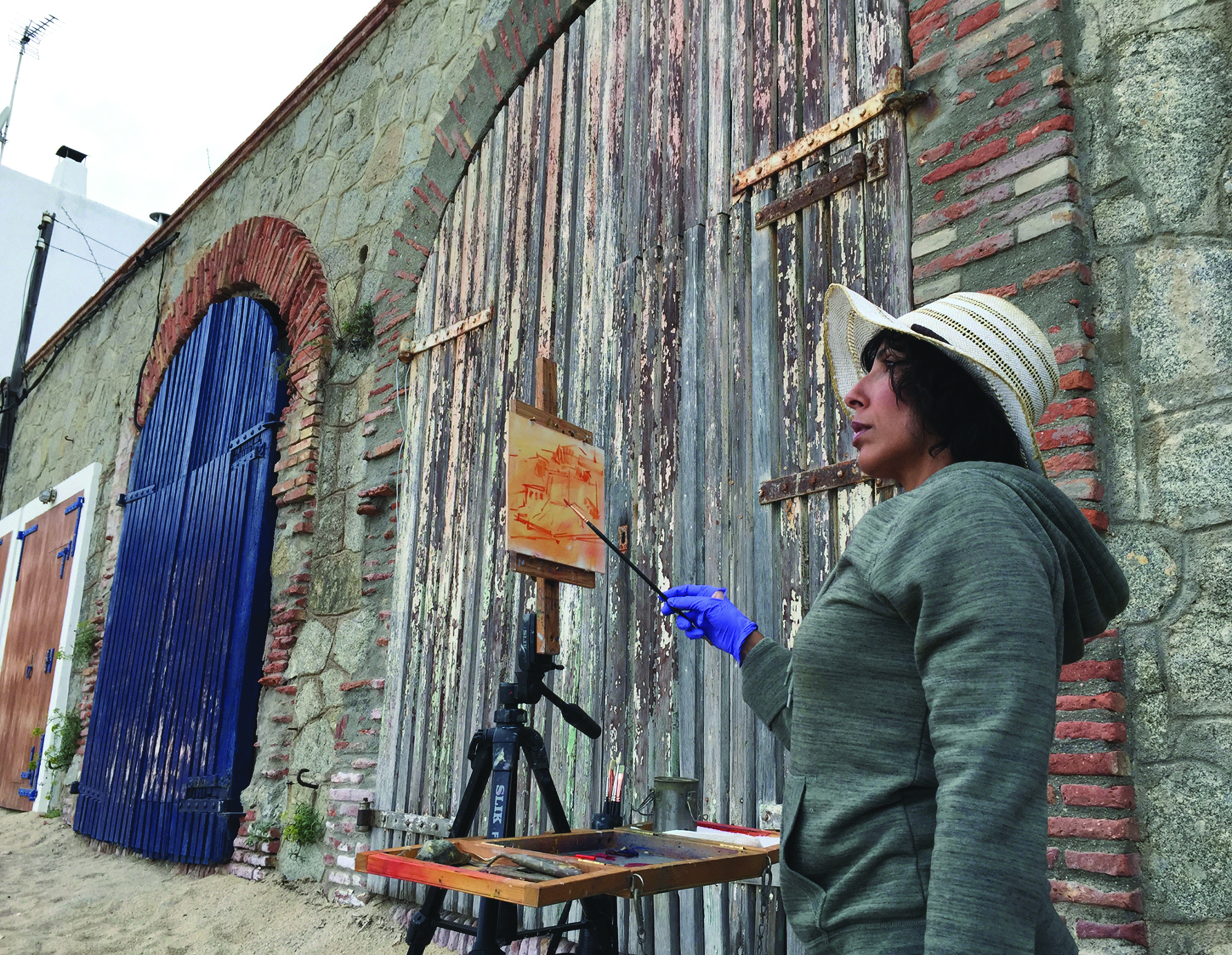
This article was brought to you by Jennifer McChristian’s PaintTube.tv art video workshop, Painting with Style:

And browse more free articles here at OutdoorPainter.com

